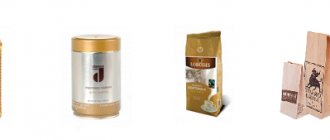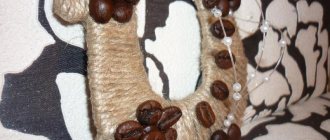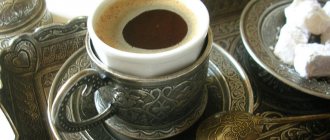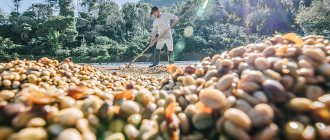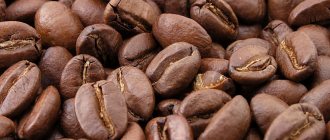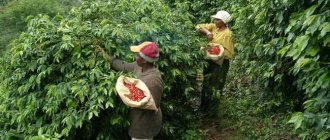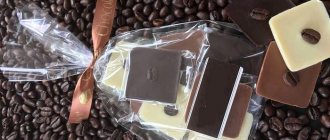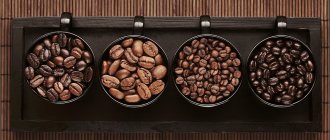07.08.2017
The degree of roasting of coffee is one of the most important factors that determine the taste. Before roasting, the coffee beans are soft, with a fresh herbaceous smell and almost no taste. The roasting process transforms raw beans into aromatic, flavor-filled, crunchy beans called “coffee.”
The most common way to determine the degree of roasting is by the color of the beans. The longer the roasting lasts, the darker the beans become. At high temperatures, oils appear on the surface of the grains. Because coffee beans vary depending on the variety and country of origin, color is not the most accurate indicator of roast level, but when combined with typical temperatures for the roasting process that produce the desired chocolate hue, color becomes a useful way to determine roast level.
Often, roasting preferences depend on where you live. For example, darker roasts are popular on the West Coast of the United States than on the East Coast. Europeans also like strong coffee, so there are French, Italian and Spanish dark roasts.
There are three most common roast types: light, medium and dark.
Light roast coffee
Appearance:
light brown color, no oil on the surface of the grains
Taste: pronounced sourness
Smell:
rich coffee
Temperature:
180-205°C
When the internal temperature of the beans reaches 205°C, the beans crack and increase in size. This process is known as “first crack”. Light roasting involves processing the beans until the first crack.
Contrary to popular belief, light roasts retain more caffeine than medium and dark roasts. Caffeine concentration is related to the ratio of coffee to water in the bean: the more water, the stronger the coffee, the more caffeine it contains. Light roasts evaporate the least amount of water. In addition, the beans retain the original taste and aroma characteristic of the climate and soil in which the coffee was cultivated.
Some of the most popular light roast coffee varieties are:
- Cinnamon roast is the lightest. It is obtained by slow roasting at low temperatures.
- Light (Light city) - higher temperature, fried a little longer than cinnamon.
Growing height
On some coffee packets you may see information about the altitude at which the coffee was grown, usually measured in meters above sea level.
So why should we care? Because the slower a coffee tree grows, the more time it essentially takes for the berries to become saturated with sugars, which contributes to a sweeter and richer taste of the drink.
When comparing two farms in the same region, the one higher up tends to have better climatic conditions. For this reason, the higher altitude at which coffee trees are grown is an indicator of higher quality coffee. But be careful, don't be fooled. After all, for example, at an altitude of 1100 meters in Brazil it will be cooler than in Ecuador.
You also need to take into account the influence of sea currents, wind, and so on. Take the Galapagos Islands, which are located on the equator at an altitude of only 200 meters above sea level and have a cool local climate that produces delicious coffee.
Growing height is useful information when considered in context. Use this when choosing coffee from one region, but don't write off varieties grown at lower altitudes until you've tried them. He may surprise you.
the packaging indicates the growing altitude of 1750 m above sea level, El Salvador coffee from Las Delicias farm, roasted by Smalltime Roasters ©Smalltime Roasters
Medium roast coffee
Appearance: chocolate color, no oil on the surface of the beans
Taste:
balance of sourness and bitterness
Smell:
coffee with smoke
Temperature:
210-230°C
This degree of roasting is achieved in the interval between the first crack and the second. Medium roast coffee has a noticeable toasty flavor, balanced with noticeable acidity.
The most common:
- American roast - traditional degree of roasting. Processing of grains lasts until the end of the first crack.
- City roast is the most popular roast. Brings out the sourness without overpowering it with a toasty flavor.
Dark roast coffee
Appearance:
dark chocolate, almost black color, oil on the surface of the grains
Taste: bitter
Smell:
coffee-roasted
Temperature:
240-250°C
Dark roast is obtained after the second crack. At the same time, the original aroma characteristic of the grains is covered by the smell of the roasting process. The beans are rarely processed above 250°C because the taste is almost charcoal.
Dark roasting is most easily tolerated by the stomach due to the absence of a casing, which causes increased acid production in the body. The shell covering the grains is burned during prolonged processing at high temperatures.
This type of roast is commonly added to espresso blends.
Varieties:
- French roast - bittersweet flavors dominate. In the western United States, it is the leader among dark roasts.
- Vienna (Viennese) - obtained by processing until the second crack. There is some oil on the surface
- Spanish - also called dark French roast. The duration of temperature treatment is until the end of the second crack. Almost charcoal taste, lack of original coffee taste.
So what are the differences between the three roast levels, other than different colors?
The darker the roast, the less original taste and aroma of the beans is felt in the drink. Roasting tones come to the fore.
- Light roasting is characterized by sourness, while dark roasting has a more tart taste.
- Light and medium roasts keep the beans dry, while dark roasts release oil on the surface.
- The darker the roast, the lower the caffeine level.
Ultimately, the difference between coffee roasts is the taste and aroma. Many people prefer light roasts in the morning (high in caffeine) and dark roasts later in the day. The optimal degree of processing depends on preference.
Cup of Excellence, Good Food Award…
On a pack of coffee you can find not only various certifications, but also quality awards.
Cup of Excellence is an award that determines the quality of green beans as presented by the manufacturer. This means that the roast profile is not taken into account at this championship when cupping samples and, in fact, many roastmasters (roasters) can offer their own roast profile.
Many producing countries have their own Cup of Excellence , so you may be able to see which variety has won the Cup of Excellence in Colombia, or you may find that a particular farm has won the Cup of Excellence in Burandii (Burundi Cup of Perfection). Also, some countries have national awards, such as “Best Pacarama” or “Brazilian Coffee of the Year”.
The Good Food award, on the other hand, is awarded in the United States for roasted coffee. In other words, only a specific variety presented by a specific roasting company can become a Good Food Award winner.
There are many more awards for coffee quality. But these two awards, perhaps the most famous and significant, demonstrate the starkest differences between them: one goes to the roasted bean, the other to the unroasted one.
Good Food Award, Ethiopia Ardi coffee roasted by: Huckleberry Roasters ©Huckleberry Roasters
There's so much information contained in a tiny coffee label that it can sometimes make your head spin. But remember, this is all to help you choose the best coffee. So go ahead: take your time! Compare processing methods and grain origins. Ask your barista for more information. Try new things to find out what you like.
Because that's how you learn more about your favorite drink.
Try our coffee
Mix of grains
Espresso coffee
Blend of 100% Arabica beans. The aroma reveals notes of roasted peanuts and hazelnuts, while the taste is dominated by dark chocolate and walnuts. Soft aftertaste of cocoa and burnt sugar.
Peru
Coffee "Chanchamayo"
Rich and strong coffee with notes of bread in the aroma.
Brazil
Coffee "Santos"
The aroma is dominated by spices and cocoa. The soft nutty-chocolate taste is offset by a slight sourness at the end.
How to Roast Coffee Beans Using a Simple Popcorn Popper
Before modern coffee roasters and popcorn roasters were invented, people roasted beans over a burner. You will need a burner roaster. It is a pot with a lid that can be easily moved.
You will need:
- Burner popcorn maker from Whirley Pop.
- Burner (gas or electric).
- Unroasted coffee beans.
- Laser thermometer (optional).
- Baking tray.
- Sealed container.
Preparation. Preheating
Visit your local coffee shop and buy unroasted, green coffee beans. Feel free to ask for recommendations on how hot to roast your chosen beans. So, don’t be afraid to figure things out on your own, experiment, learn how to roast coffee according to your taste preferences.
Once you've purchased your grains, clear out the picnic table and set up the burner, popcorn popper, and baking sheet. Preheat the Whirley Pop; it should warm up to a temperature of about 200 degrees Celsius. The most convenient way to measure temperature is with a laser (infrared) thermometer. It should take about 5-10 minutes to warm up to the desired temperature.
Place coffee beans into the device
Once the popcorn maker has reached the desired temperature, pour in the unpopped kernels. Start turning the handle. It is necessary that the grains do not stop moving throughout the entire procedure, because this way they will roast more evenly. Therefore, the whole process needs to be cranked at a measured pace. Don’t forget: this is a business in which you need to put your whole soul.
Meanwhile, the beans will go through various stages of roasting. You will watch natural, unroasted coffee seeds transform into beautiful, aromatic, and full-flavored beans of your own making. Be careful, because it only takes a few minutes from perfectly roasted coffee beans to perfectly ruined ones.
Roast the coffee beans
During roasting, coffee beans go through several stages. You'll see them go from raw to something you can grind and make coffee from. Only you can decide what degree of doneness you are interested in. It is important to be attentive to the process in order to learn to control the taste of the future drink, master the procedure to perfection and, most importantly, not let the grains burn.
There are 10 stages in total. Try to determine each of them during the roasting process, without taking into account the last degree. It should be avoided, because it means that the grains have been overcooked.
Remove the grains and cool them
Once you have reached the roast level you are interested in, pour the coffee beans onto a baking sheet. Shake it. Let the grains cool under the influence of a natural breeze, and the delicious smells entering the neighbor's yard will make others jealous. Depending on how deep the roast was, you'll soon need to put the beans away in a storage area.
Place the grains in a storage container
Once the beans have cooled, they should be placed in a quality, airtight container. The best option is glass jars with screw caps, as they create an almost completely airtight environment. If your roast is a full New York roast or even darker, we recommend chilling the beans for 12 hours. This will allow the oils to release before packaging the product.
All that remains is to grind the beans, brew the coffee and enjoy the drink. In just 20 minutes, which the whole process takes, you will have delicious home-roasted coffee.
Wabash Valley Farms - Burner Popcorn Popper - Whirly Pop with Popcorn Popper Kit
Approximate cost: $26.99
What are the best beans for French roast?
Since the coffee's flavor notes are mostly gone by the time it reaches French Roast status, it stands to reason that few will use the more expensive beans for a French Roast. You can get great results with less expensive beans.
There is such a huge selection of beans to choose from, and each company makes its own custom selection to meet their customers' criteria. They can play with individual varieties and mixtures. This is the artful side of the coffee artisan.
Historical excursion
For the first time, coffee roasting technology began to be used in the Ottoman Empire - the first mention of this process comes from the chronicle of the 15th century. For heat treatment of grains, special round metal sheets were used, which replaced dishes. As an alternative, they used porcelain bowls with a long handle, which was convenient for holding a steel or ceramic “pancake” over a brazier filled with hot coals. Coffee beans were poured into the center of this dish and gradually roasted, stirring them occasionally.
The first roaster, a device for roasting coffee in large volumes, was invented in 1650 in Cairo, the current capital of Egypt. It had the shape of a cylinder, contained an impressive amount of raw materials and was installed above a brazier with coals. The cylindrical structure easily rotated around its axis, which ensured the frying of the contents. This invention was repeated in other countries, including Holland, Italy, France and other European countries.
At the beginning of the 20th century, the technology for roasting grains on an electric roaster was patented almost simultaneously in the USA and Germany. As a result, the negative impact of smoke on the aroma and taste of the future hot drink was eliminated. Today, roasters are represented by an impressive variety of models with many modes, but manual roasting has become the lot of connoisseurs.
How to enjoy it at home
The great thing about French roast is that you can cook it any way you want and it will still taste great. Millions of people prepare their morning brew using an automatic coffee maker with satisfying results. Many others believe that for a French roast, nothing is more perfect than cooking it in a French press.
For those who have espresso machines, be sure to enjoy their latte or cappuccino made with freshly roasted French roast.
Without a doubt, French Roast has left an indelible mark on the world of coffee. This is likely one of the most popular methods on the planet, and for good reason. The next time you're at a coffee shop and the barista asks if you want French fries, confidently answer "Yes!"
If you find an error, please select a piece of text and press Ctrl+Enter.
